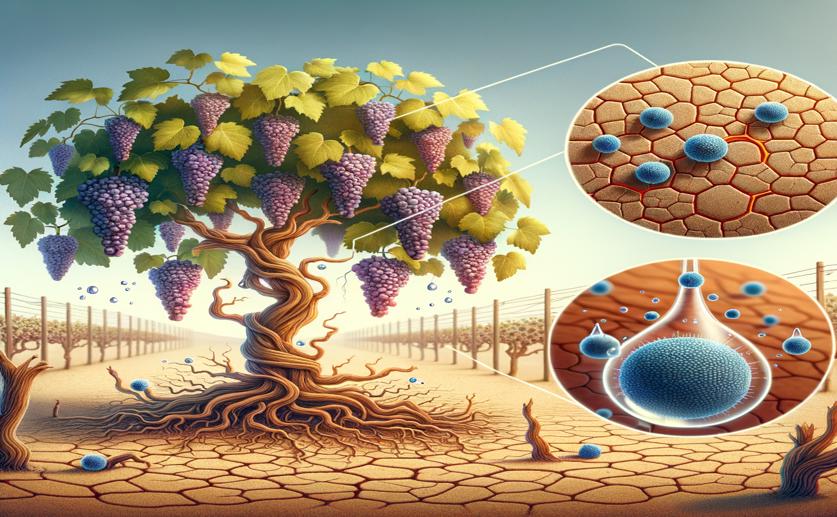
Selenium Nanoparticles Help Grapevines Cope with Drought Stress
Greg Howard
6th August, 2024

Image Source: Natural Science News, 2024
Key Findings
- Researchers at Yozgat Bozok University found that selenium nanoparticles (Se-NPs) improved drought tolerance in grapevine saplings
- Se-NP-treated grapevines showed better growth, water retention, and higher relative water content under drought conditions
- Se-NPs increased antioxidant enzyme activities, reducing oxidative stress and cellular damage in grapevine saplings during drought
AgricultureBiotechPlant Science
References
Main Study
1) Modulatory effects of selenium nanoparticles against drought stress in some grapevine rootstock/scion combinations
Published 5th August, 2024
https://doi.org/10.1186/s40538-024-00609-6
Related Studies
2) Selenium and silica nanostructure-based recovery of strawberry plants subjected to drought stress.
3) Simultaneous mitigation of cadmium and drought stress in wheat by soil application of iron nanoparticles.
4) VvNAC17, a novel stress-responsive grapevine (Vitis vinifera L.) NAC transcription factor, increases sensitivity to abscisic acid and enhances salinity, freezing, and drought tolerance in transgenic Arabidopsis.



 24th July, 2024 | Jenn Hoskins
24th July, 2024 | Jenn Hoskins